Hahla is a traditional Greek product called “trachana,” a form of frumenty that is exclusively found on the island of Lesvos. Generations and generations have grown up with it. It is made with ground wheat, local sheep’s milk, and cultured yogurt.
Trachanas has high nutritional value, low calories, and low fat content, while being rich in carbohydrates and proteins. It has a sub-acidic taste and is particularly tasty and aromatic. Its nutritional composition includes 15% proteins, 70% carbohydrates, 4% fat, and approximately 400 calories.
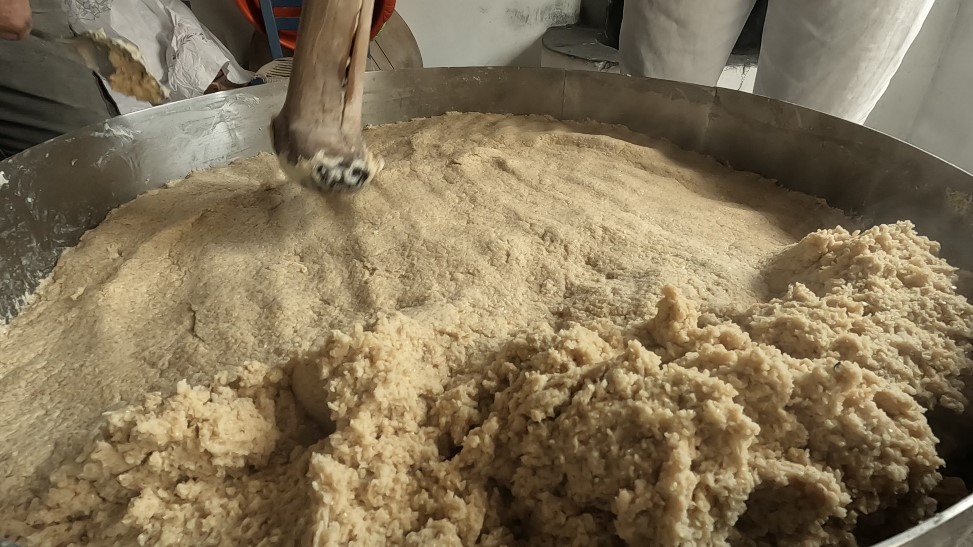
Mesotopos, located in the southwest of Lesvos, is primarily engaged in animal husbandry, and therefore, trachanas is made in almost all households. I visited Mesotopos to witness and document the making of Hahla at a small Dairy Factory run by the Vasilas family.
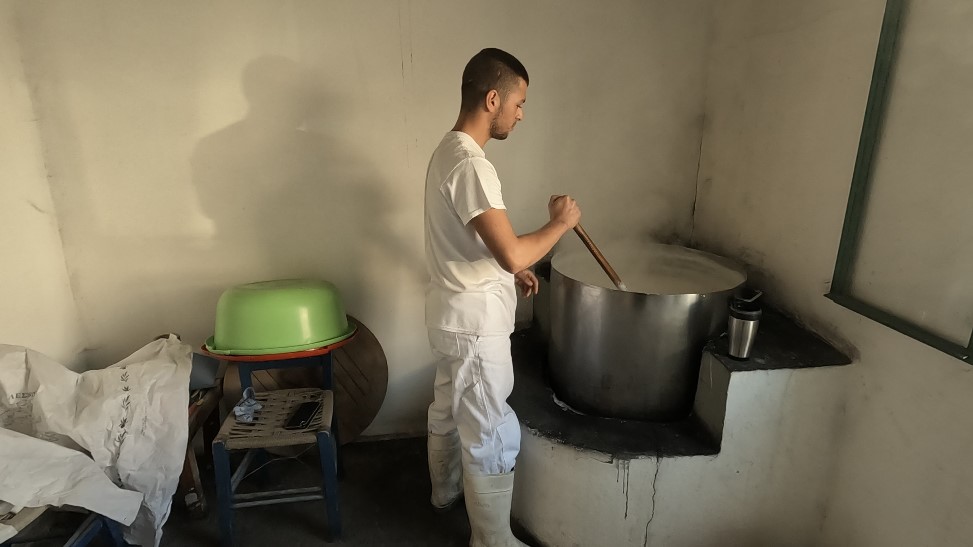
The process begins early in the morning and is still carried out in the old traditional way, using a wood fire and hand mixing for hours. The outcome is truly amazing. The process starts with collecting the sheep’s milk, which arrives early from the shepherd. Around 50-60 kilos of milk are mixed with a small amount of Greek yogurt. Every day, more milk and yogurt are added for five days until it reaches 170 kilos and the milk has turned sour due to fermentation.
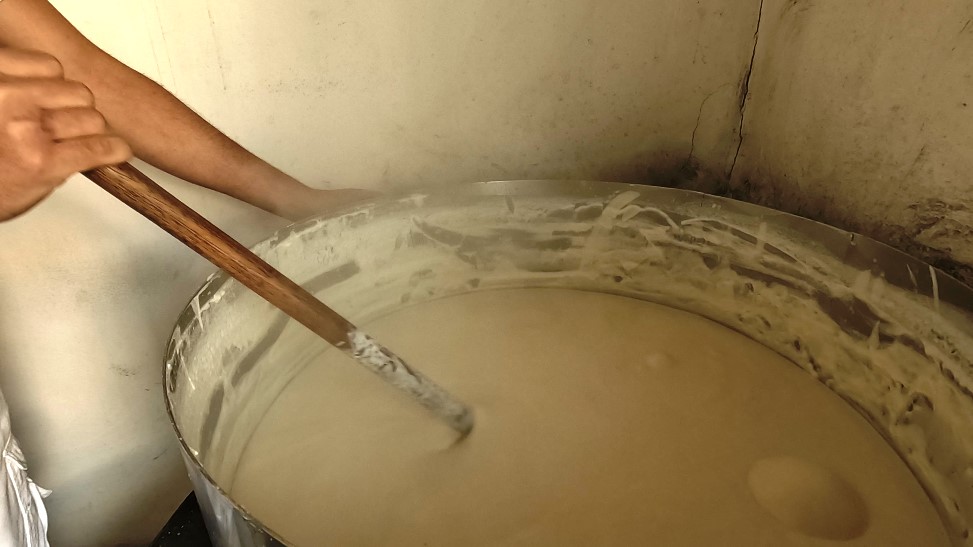
Next, the sour milk (xinogalo) is placed in a cauldron and simmered while continuously mixing for five hours, reducing it to approximately 140 kilos. Then, 60 kilos of ground wheat (kourkouti) are mixed into the sour milk until it reaches the consistency of thick bread dough. I had the opportunity to taste this “dough” as it came out of the cauldron, and it was amazing.
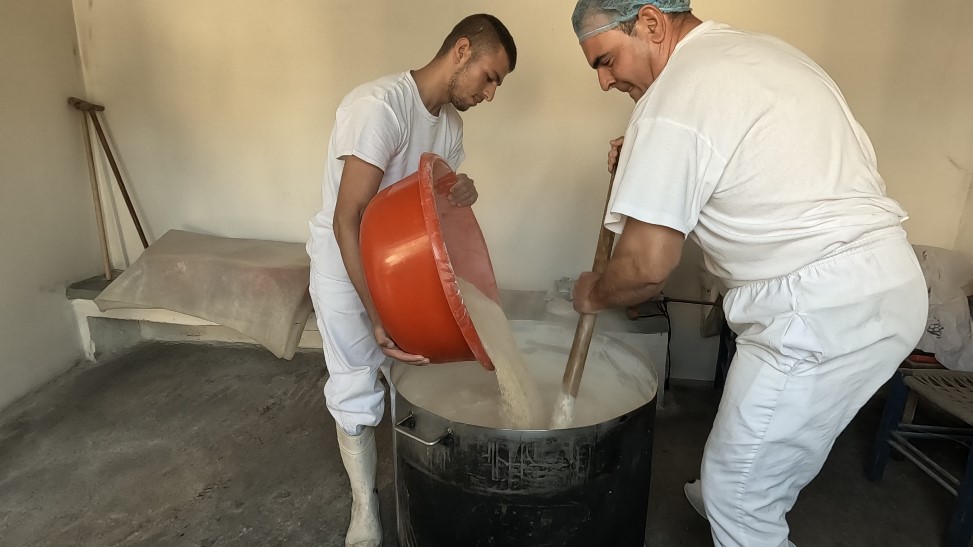
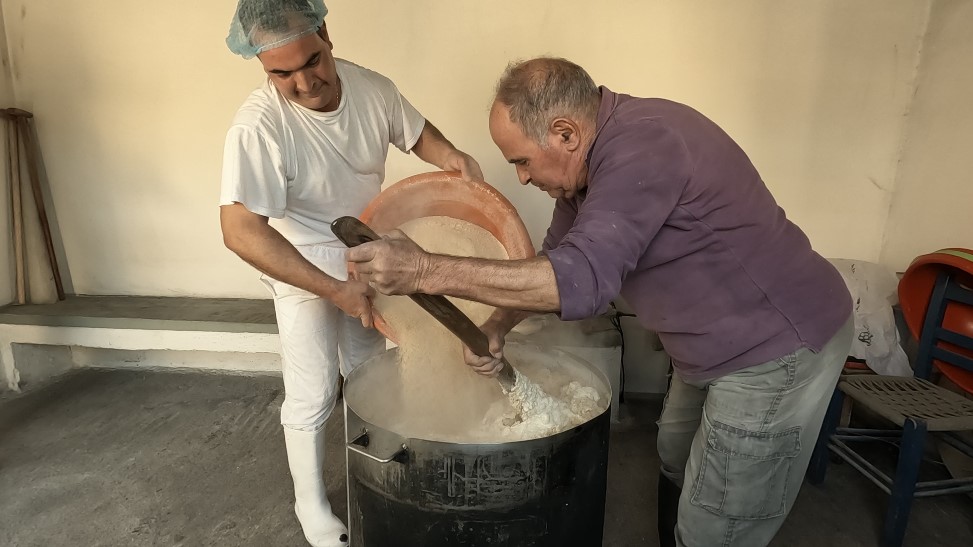
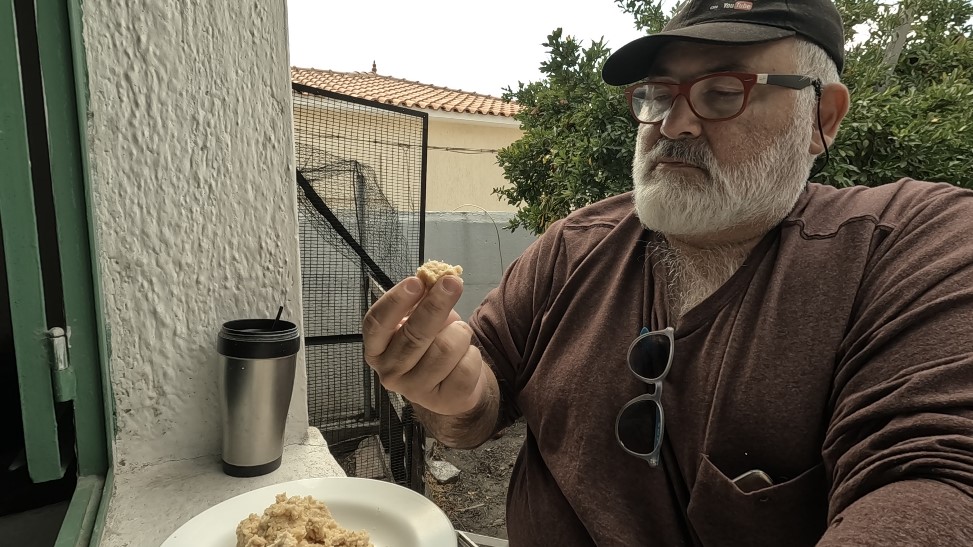
This mixture is then left for a day before being shaped into “Hahla” and spread out in nets to dry in the sun for about three days. It is now ready to be consumed.
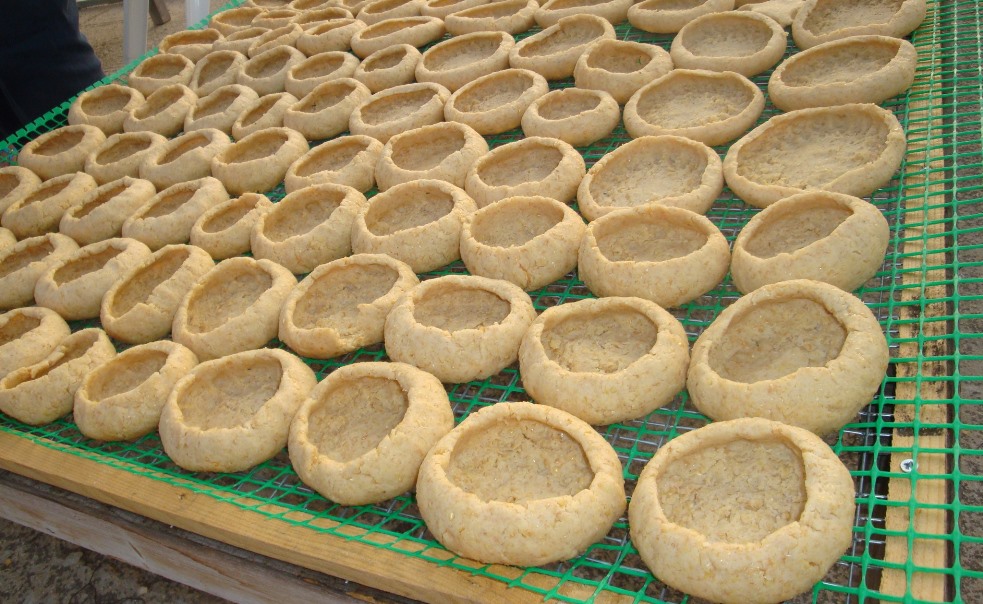
My good friend, Chef Stratos Iosifelis, explained to me that frumenty was always dried and crumbled, commonly used to make soups or mixed with hot milk as a highly nutritious breakfast.
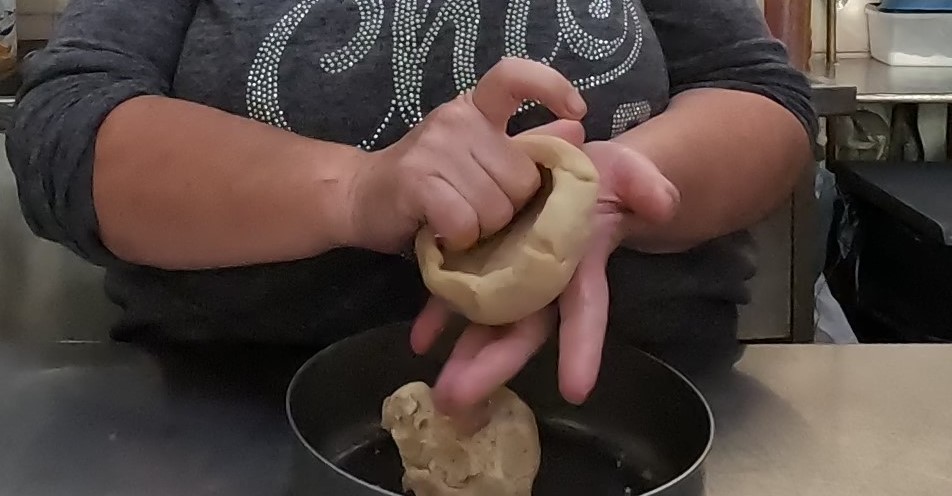
They gave it the shape of a “cup” (hahla) for the convenience of workers to carry it to the fields or fishing boats. It could be filled with tomatoes, cheese, and yogurt, or eaten plain as a snack. It can also be broken into a soup and used as regular frumenty.
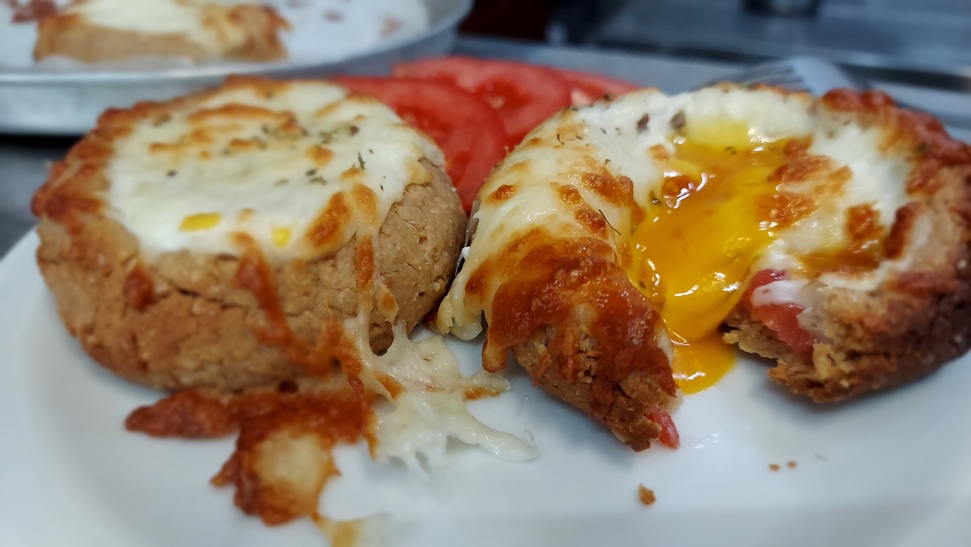
Chef Stratos prepared it for me by stuffing it with a slice of tomato, a whole egg, and topping it with the local cheese “Ladotyri.” He baked it in the oven for a few minutes until the egg was cooked.
The episode of how Hahles and Ladotyri are made will be streaming on Savor Greece Sunday July 9th 2023.
You can watch all the episodes from season 2 here

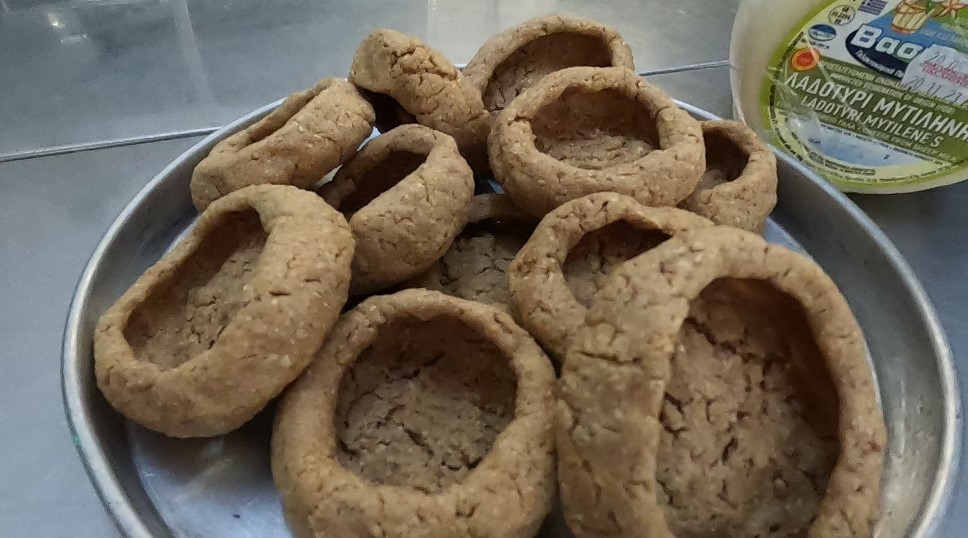
Recent Comments